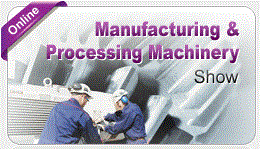Unlocking the Secrets of EN 1092-1: Essential Specifications for Steel Flanges!
- gtbmsbcs
- 1月10日
- 讀畢需時 4 分鐘
Understanding EN 1092-1: The Standards for Circular Steel Flanges
EN 1092-1 is a vital European standard that delineates the specifications for circular steel flanges used in piping systems. This standard plays a crucial role in various industrial applications by ensuring the reliability and safety of piping connections. Below are the essential aspects of EN 1092-1.
Overview of EN 1092-1
Purpose: This standard defines critical specifications including dimensions, tolerances, materials, pressure ratings, and marking requirements for flanges that connect pipes, valves, and fittings in a wide array of industrial settings.
Scope: EN 1092-1 encompasses flanges with Pressure Nominal (PN) ratings ranging from PN 2.5 to PN 400 and nominal sizes from DN 10 to DN 4000. It includes various flange types such as socket weld and screwed flanges.
Types of Flanges Specified in EN 1092-1
EN 1092-1 specifies various flange types designed for different applications. Here’s a breakdown of the types included in the standard:
Flange Type | Description |
01 | Plate (Slip-on) flanges for welding |
02 | Loose plate flanges with weld-on plate collar |
04 | Loose plate flanges with weld-neck collar |
05 | Blank (Blind) flanges |
11 | Weld-neck flanges |
12 | Hubbed slip-on flanges for welding |
13 | Hubbed threaded flanges |
21 | Integral flanges |
32 | Weld-on plate collars |
34 | Weld-neck collars |
These flange types provide various connection methods for pipes, valves, and fittings, ensuring safety and compatibility in piping systems.
Key Specifications
Dimensions and Tolerances: The standard outlines detailed dimensions for flanges, including outer diameter, bolt circle diameter, and thickness. It also specifies tolerances to ensure proper alignment and fit between mating flanges.
Materials: EN 1092-1 identifies acceptable materials for flange construction, taking into account factors such as temperature, pressure, and corrosion resistance. Specific grades of steel are recommended for diverse applications.
Pressure Ratings: Flanges are classified into different pressure classes (PN), accommodating a range of operational conditions from low to high pressure.
Marking and Certification: Flanges manufactured in compliance with EN 1092-1 must feature relevant markings, including material grade, pressure class, and manufacturer details. Certification may be necessary depending on the application.

Applications of EN 1092-1 Flanges
EN 1092-1 flanges find widespread use across a variety of industrial sectors due to their standardized specifications and reliable performance. One key industry where these flanges are extensively employed is mechanical engineering.
In the mechanical engineering field, EN 1092-1 flanges are integral components in the construction and maintenance of industrial machinery and equipment. Their ability to withstand high pressures and temperatures makes them essential for applications such as steam turbines, compressors, and other power generation systems. The standardized dimensions and pressure ratings ensure seamless integration with various pipe sizes and fittings, simplifying the design and assembly of complex mechanical systems. Additionally, the wide range of flange types specified in EN 1092-1, from weld-neck to slip-on varieties, allows manufacturers to select the most appropriate option for their specific machine configurations and operational requirements.
Beyond mechanical engineering, EN 1092-1 flanges are also extensively used in the oil and gas industry, where they play a crucial role in the transportation and processing of hydrocarbons. The high-pressure capabilities of these flanges are particularly important in offshore platforms, refineries, and petrochemical plants, where they help maintain the integrity of pipelines and equipment under demanding operating conditions. The standardized material specifications and quality control measures outlined in EN 1092-1 ensure that these flanges can withstand the harsh environments and corrosive substances encountered in the oil and gas sector, providing a reliable and safe solution for critical infrastructure.
Differences Between EN 1092-1 and EN 1092-2
While both EN 1092-1 and EN 1092-2 provide specifications for flanges used in piping systems, they cater to different materials and applications:
Scope and Material Types:
EN 1092-1: Focuses on steel flanges with specifications based on PN ratings and dimensions.
EN 1092-2: Pertains to cast iron flanges, specifying requirements that reflect different material properties.
Flange Types and Design:
EN 1092-1: Includes a variety of flange types, such as raised face and flat face designs.
EN 1092-2: Focuses on cast iron versions suitable for specific applications like water supply systems.
Pressure Ratings:
EN 1092-1: Covers a broader range of pressure ratings from PN 2.5 to PN 400.
EN 1092-2: Typically includes lower pressure classes.
Applications:
EN 1092-1: Suitable for industries such as oil and gas and chemical processing.
EN 1092-2: Often used in environments where corrosion resistance is essential, like water treatment plants.
Conclusion
Overall, EN 1092-1 flanges are not just essential components in various industrial applications; they represent the foundation of a safe and efficient infrastructure in today's complex engineering landscape. As industries such as oil and gas, chemical processing, and HVAC systems continue to evolve, the importance of these standardized flanges becomes increasingly evident. Their rigorous specifications for dimensions, materials, and pressure ratings significantly enhance safety, helping to prevent failures that could lead to costly disruptions or environmental hazards.
Moreover, the uniformity offered by EN 1092-1 simplifies procurement and installation processes, enabling engineers to confidently select compatible components. This streamlining not only reduces the risk of mismatched parts but also fosters a more resilient supply chain, ensuring consistent quality across projects. As we face new challenges in an ever-changing industrial environment, the role of EN 1092-1 flanges is pivotal in supporting the safe transport of fluids and gases, crucial for maintaining operational continuity.
In conclusion, embracing the use of EN 1092-1 flanges is not merely about compliance; it is a proactive step toward fostering innovation and sustainability in industrial operations. As we look to the future, let us recognize the potential of standardized solutions to drive efficiency and safety, inspiring a collective commitment to excellence in engineering practices. By prioritizing these standards, we can build a more reliable and resilient industrial landscape that meets the demands of a dynamic world.











留言